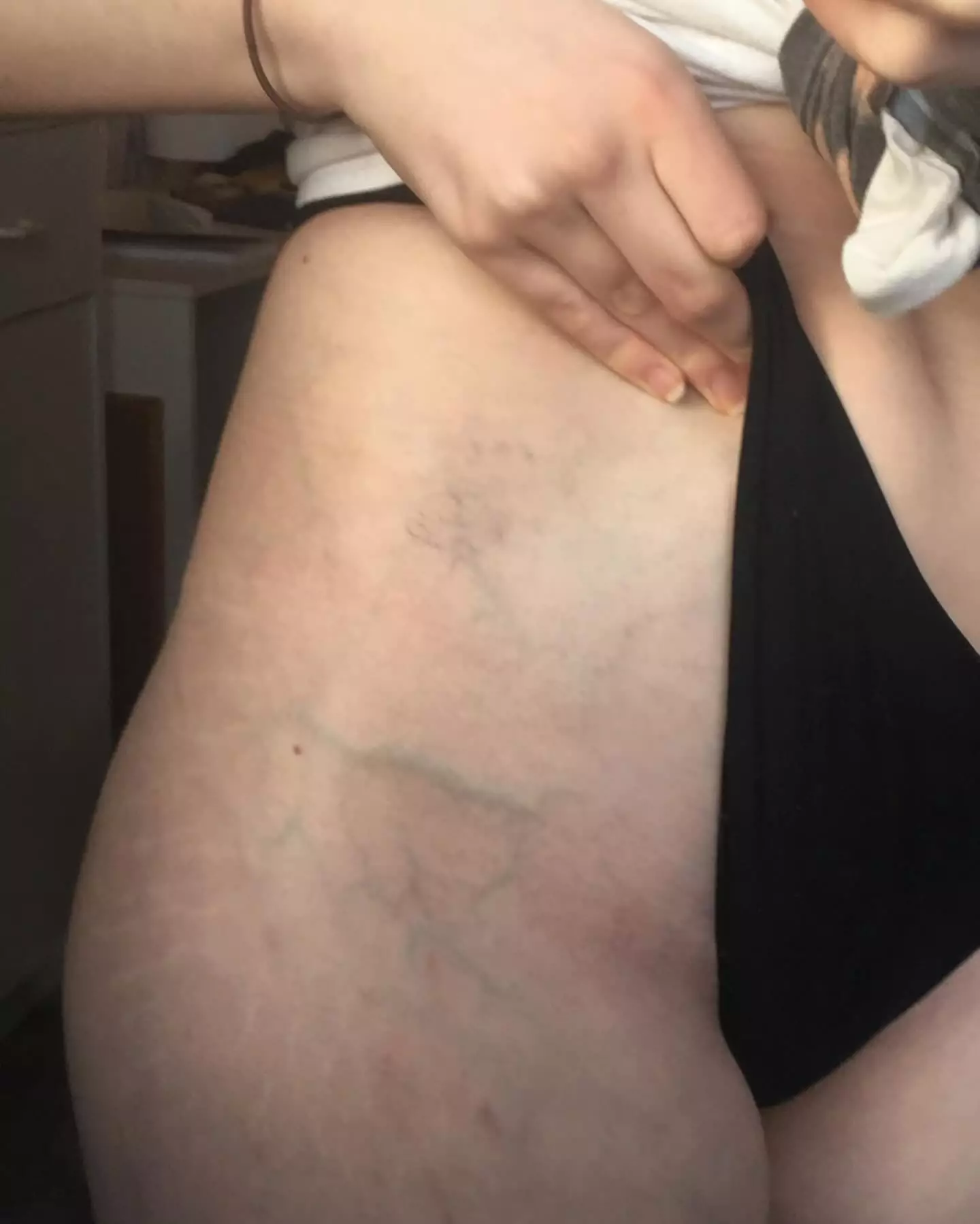
A teenager was left close to death after becoming one of the youngest people in Britain to suffer a blood clot from the contraceptive pill.
Nicole Leadbitter had started taking the progesterone-only pill Cerazette, but a few months later she was changed to the combination pill – something that uses artificial versions of the female hormones oestrogen and progesterone, which are produced naturally in the ovaries.
Just seven days after her first tablet, she started to get bad back pain but initially dismissed it.
Advert
Nicole went to hospital when things got worse, but was sent home without having her blood taken by doctors.

That night, she began suffering really bad leg cramps, so went to take some painkillers.
Nicole, who was 17 at the time, recalled: “I then tried to massage my calf and realised my left leg looked a lot bigger and felt swollen so I took a video and sent it to my friends to see if I was just seeing things from being sleepy.
Advert
“They told me it looked a lot bigger than my right one.
"I was in agony and felt extremely light headed so I crawled my way to the bathroom in case I needed to throw up, fortunately my mum had heard me so she came to see if I was okay or needed anything and she looked and my legs and instantly rung the hospital to try and get an ambulance.
“By this time I was screaming and crying in pain.”
After arriving at hospital, Nicole was diagnosed with a pulmonary embolism, a blood clot that blocks an artery in the lung, which usually starts in a deep vein in the leg.
Advert
“The first question they asked was if I was taking the contraceptive pill and which one,” she said. “By this time I had been on it a week and they came to the conclusion that it was the pill.”
At first, Nicole, who is now 20, was told she needed keyhole surgery to remove the clots – several of which were found in her legs and lungs.
But after she was found to have a deformation of the channels connecting her heart and lungs, doctors realised surgery would be dangerous.

Instead, the clots had to be broken up using powerful anti-coagulants, leaving Nicole unable to walk for six weeks.
Advert
She had to take blood thinners for two years, and now has to take them whenever she travels.
She also has to wear a compression stocking every day, and was left with visible veins in her legs and marks from where she was injected.
Nicole had an ambition to join the army, but after the thrombosis doctors told her it’s likely she will suffer more clots.
Now studying marketing, she is keen to warn others about the signs to look out for after her harrowing experience in November 2020 – recalling how doctors told her that, if she had left it any longer and not gone to hospital, she could have lost or leg ‘or even possibly died.
Advert
Medics also explained how it would be ‘rare’ for her to have kids or ‘survive carrying the labour’, as it would be a ‘miracle’ if she didn’t get another clot, especially while pregnant.
"That’s another big lifestyle change to be told at 17 years old,” Nicole said.
The combined pill prevents pregnancy by preventing the ovaries releasing eggs and thickening the mucus in the neck of the womb, so it is harder for sperm to penetrate the womb.

According to the NHS, it has been linked to a slightly increased risk of some serious health conditions, such as blood clots and breast cancer.
“The contraception pill nearly killed me,” Nicole said, adding that only 1 in 1,000 people per year go through what she did at her age.
She continued: “I had looked at the general side effects and common ones, but I didn’t think too much of the uncommon or rare side effects as I never thought they would happen to me.
“I would urge people to consider the risks of taking the pill. Just because someone you know is on it and is fine, that doesn’t mean you will be.
“And I would also want to raise awareness among young girls that this is a side effect as I didn’t know what was happening until I was screaming in pain in hospital.”
The Medicines and Healthcare Products Regulatory Agency is the government body that oversees how safe prescriptions are to the general public.
A spokesperson said: "The risk of blood clots associated with using the contraceptive pill is very small and has been known about for many years.

“The decision to prescribe or use the pill should take into consideration any risk factors for blood clots, which includes any family history of thrombosis.
"Prescribers and women should, however, be aware of the possible risk factors for blood clots and the key signs and symptoms, which are described in detail in product information.
"If women have questions, they should discuss them with their GP or healthcare provider but should keep taking their contraceptive until they have done so.
"These are very safe, highly effective medicines for preventing unintended pregnancy and the benefits associated with their use far outweigh the risks for the majority of people.
"If you suspect you've had a side effect from the contraceptive pill you can report it using our Yellow Card scheme.”
Featured Image Credit: Triangle News